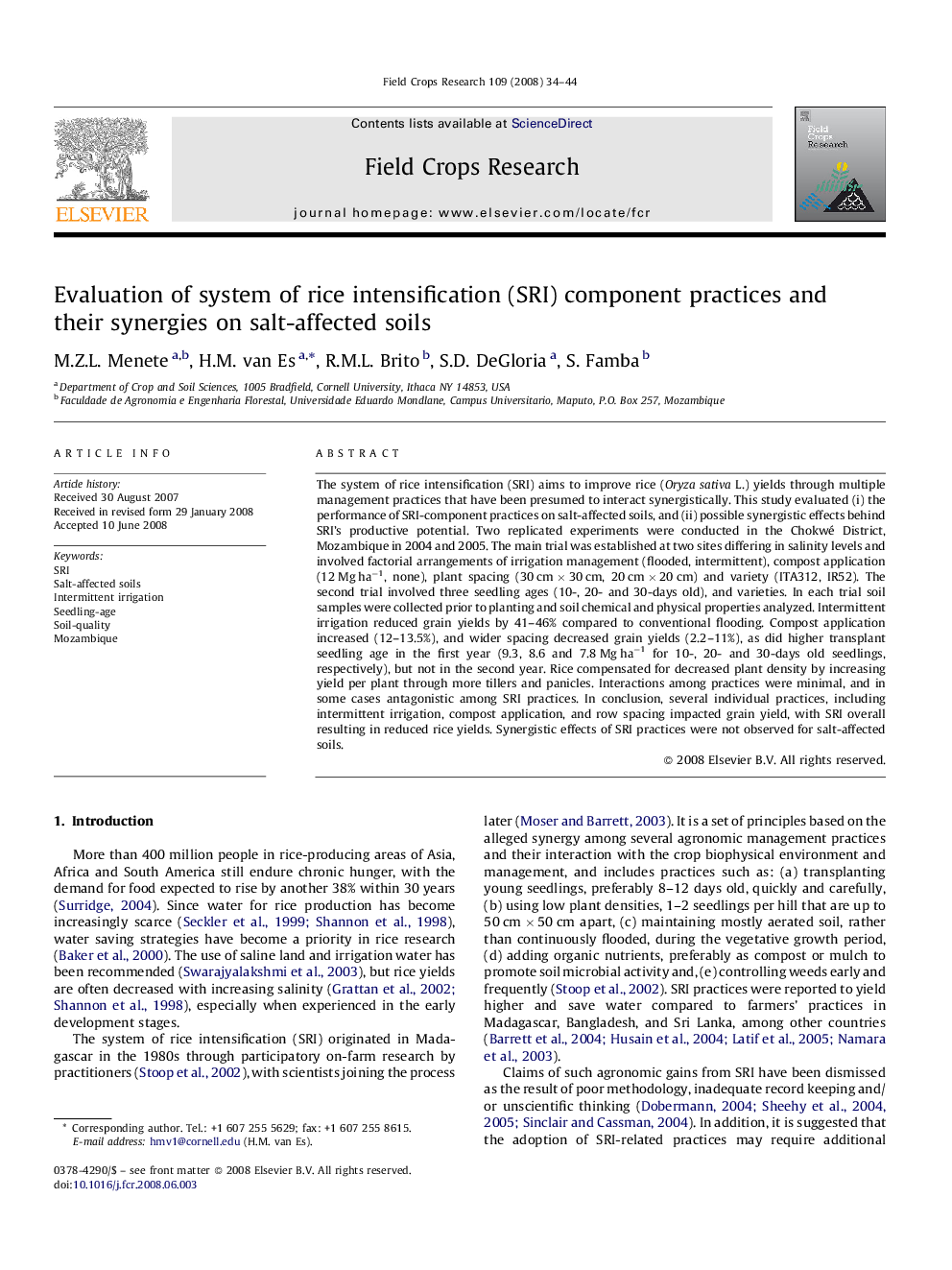| Article ID | Journal | Published Year | Pages | File Type |
|---|---|---|---|---|
| 4511420 | Field Crops Research | 2008 | 11 Pages |
The system of rice intensification (SRI) aims to improve rice (Oryza sativa L.) yields through multiple management practices that have been presumed to interact synergistically. This study evaluated (i) the performance of SRI-component practices on salt-affected soils, and (ii) possible synergistic effects behind SRI's productive potential. Two replicated experiments were conducted in the Chokwé District, Mozambique in 2004 and 2005. The main trial was established at two sites differing in salinity levels and involved factorial arrangements of irrigation management (flooded, intermittent), compost application (12 Mg ha−1, none), plant spacing (30 cm × 30 cm, 20 cm × 20 cm) and variety (ITA312, IR52). The second trial involved three seedling ages (10-, 20- and 30-days old), and varieties. In each trial soil samples were collected prior to planting and soil chemical and physical properties analyzed. Intermittent irrigation reduced grain yields by 41–46% compared to conventional flooding. Compost application increased (12–13.5%), and wider spacing decreased grain yields (2.2–11%), as did higher transplant seedling age in the first year (9.3, 8.6 and 7.8 Mg ha−1 for 10-, 20- and 30-days old seedlings, respectively), but not in the second year. Rice compensated for decreased plant density by increasing yield per plant through more tillers and panicles. Interactions among practices were minimal, and in some cases antagonistic among SRI practices. In conclusion, several individual practices, including intermittent irrigation, compost application, and row spacing impacted grain yield, with SRI overall resulting in reduced rice yields. Synergistic effects of SRI practices were not observed for salt-affected soils.
